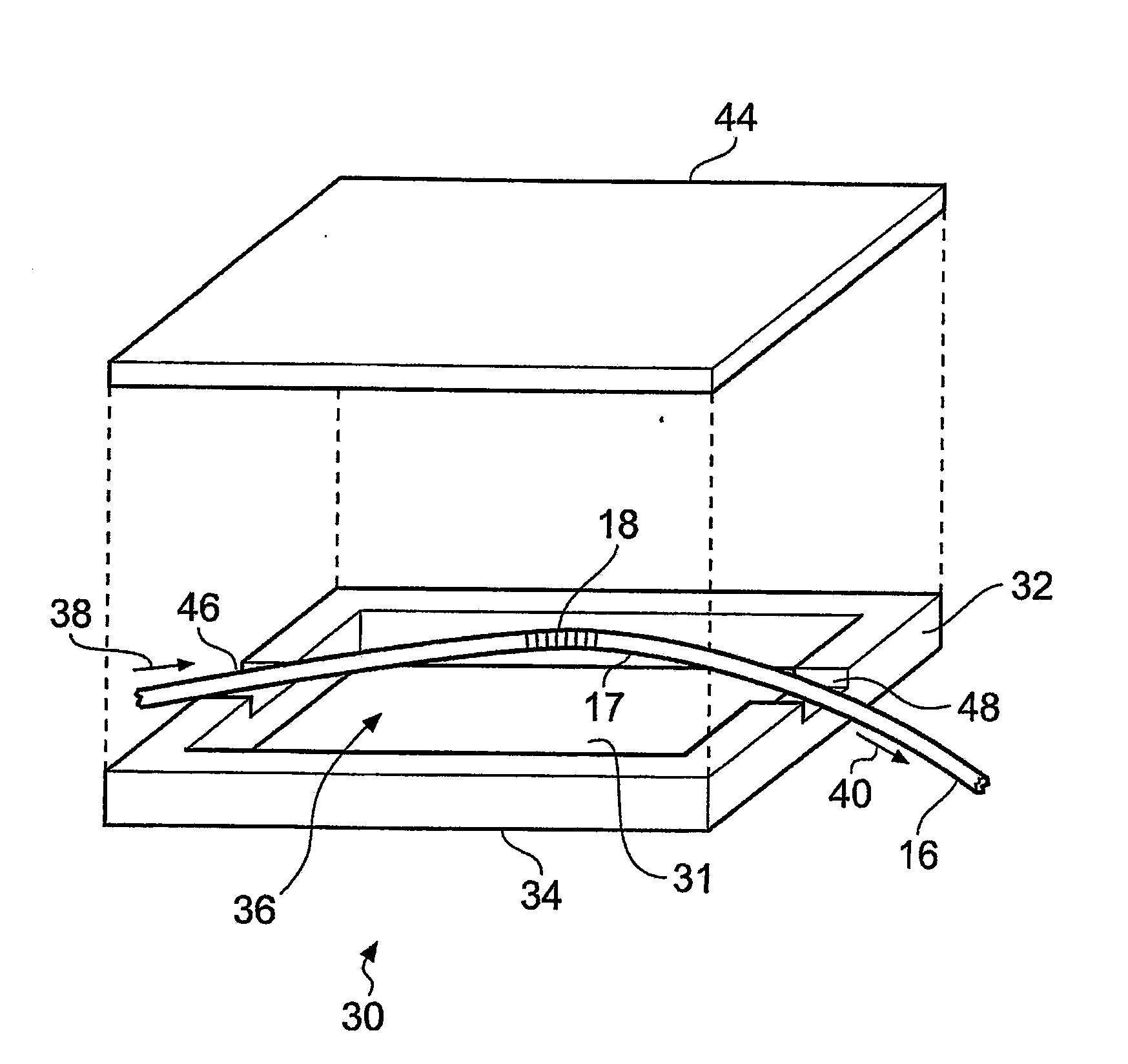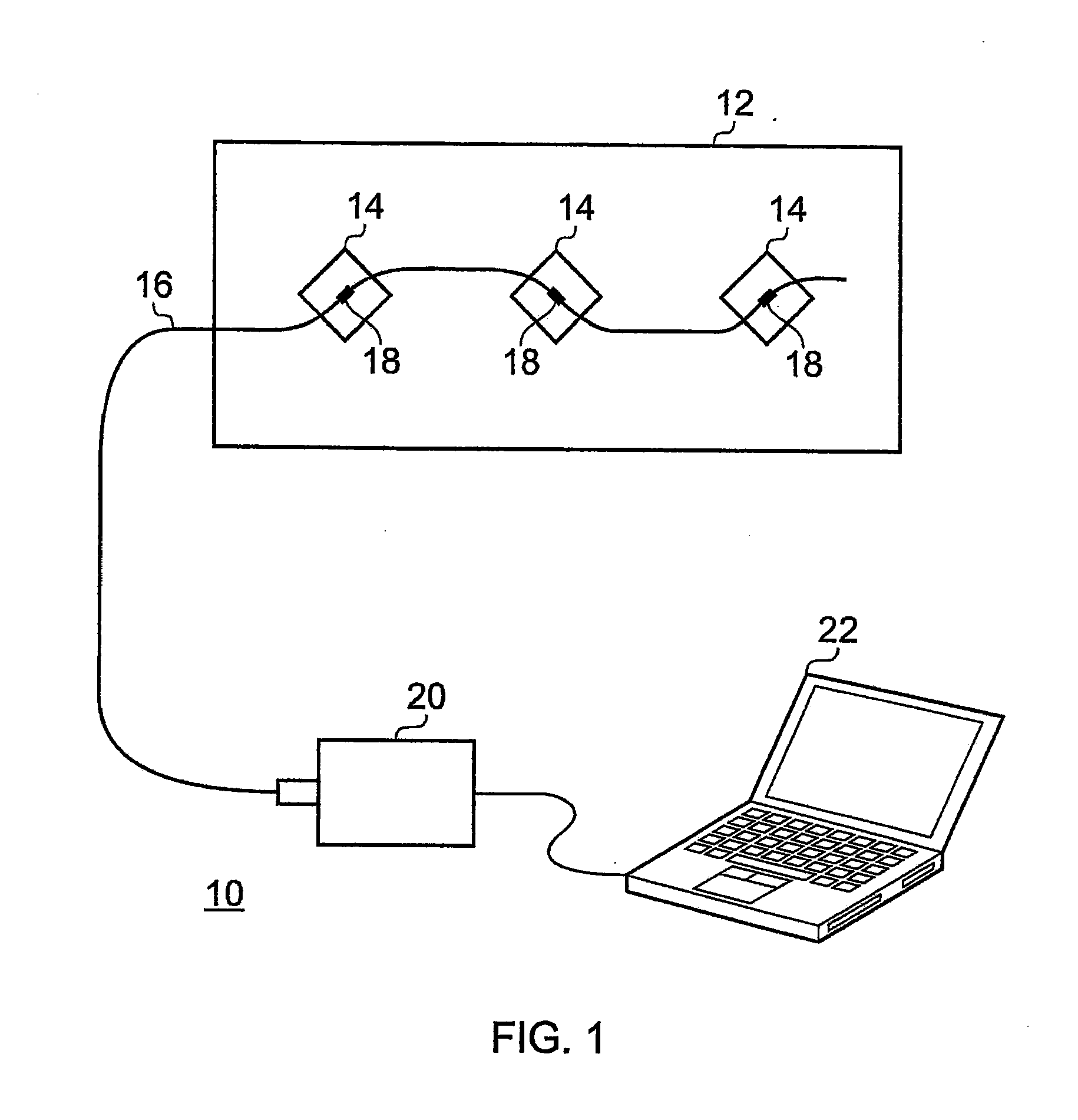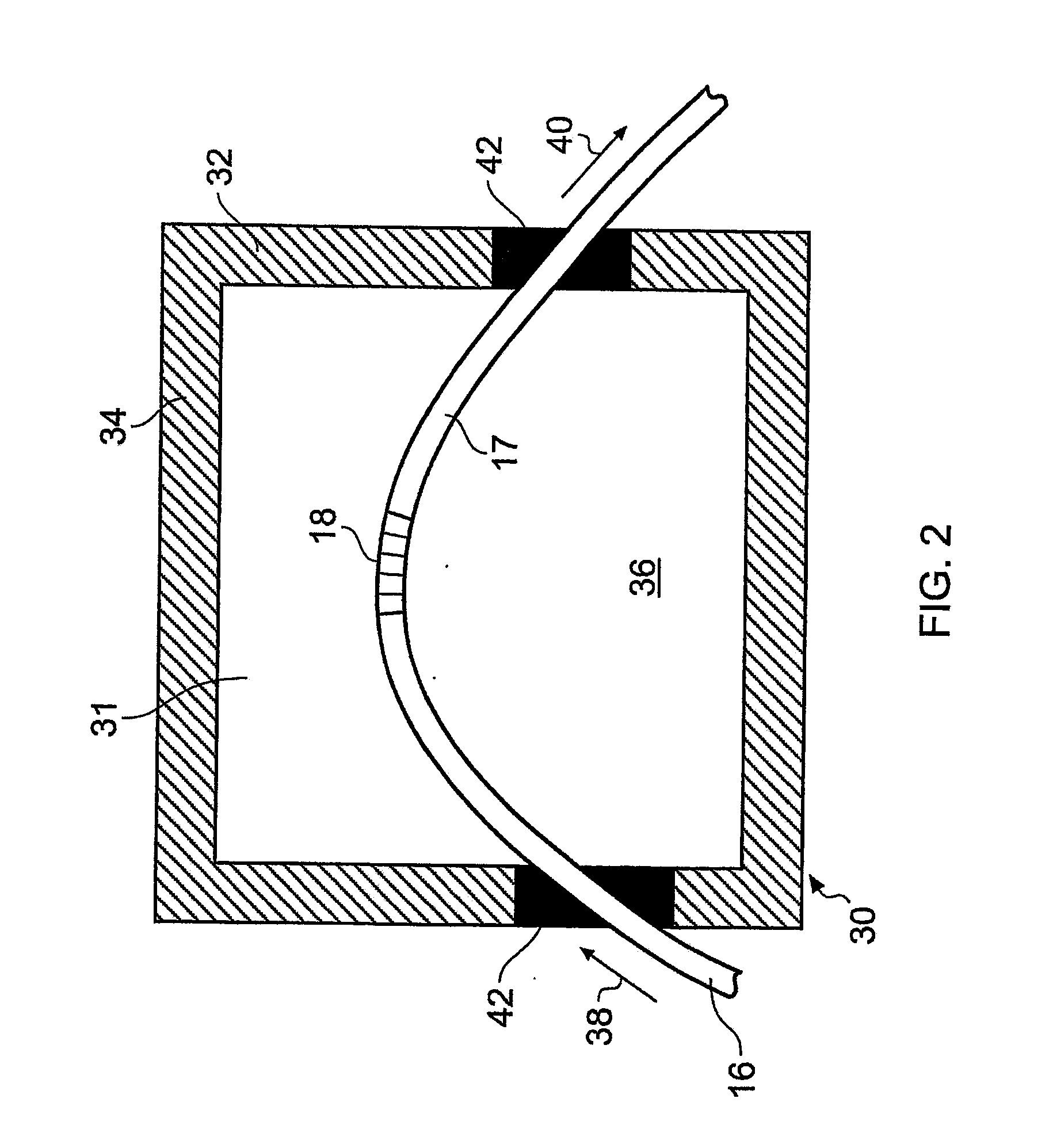Temperature sensing
a technology of sensing and temperature, applied in the field of sensing temperature, can solve the problems of multiple wires and connections, wiring replacement, wiring damage, etc., and achieve the effect of more accurate sensing of temperature, easy to make, and easy association with a structur
- Summary
- Abstract
- Description
- Claims
- Application Information
AI Technical Summary
Benefits of technology
Problems solved by technology
Method used
Image
Examples
Embodiment Construction
[0029]Embodiments of the invention will be described with reference to a tool for forming a component of composite material for example a laminated material made of pre-impregnated reinforcement fibre in a polymeric resin.
[0030]Each lamina of the laminated material can include plies of fibres. The fibres may be carbon fibres or Kevlar for example. The fibres of successive laminae may be differently oriented as known in the art. The process of forming the component requires the tool to be heated by one or more heaters which may be embedded in the tool. The temperature of the tool needs to be at least monitored and preferably controlled and for that purpose an array of temperature sensors is provided. In this example, the array comprises many sensors on a single optical fibre.
[0031]The tool can be of a material compatible with the composite material being formed. For example, in the described examples, the tool is of the same material as the composite.
[0032]The optical fibre can be ma...
PUM
| Property | Measurement | Unit |
|---|---|---|
| thickness | aaaaa | aaaaa |
| length×width×height | aaaaa | aaaaa |
| length | aaaaa | aaaaa |
Abstract
Description
Claims
Application Information
 Login to View More
Login to View More - R&D
- Intellectual Property
- Life Sciences
- Materials
- Tech Scout
- Unparalleled Data Quality
- Higher Quality Content
- 60% Fewer Hallucinations
Browse by: Latest US Patents, China's latest patents, Technical Efficacy Thesaurus, Application Domain, Technology Topic, Popular Technical Reports.
© 2025 PatSnap. All rights reserved.Legal|Privacy policy|Modern Slavery Act Transparency Statement|Sitemap|About US| Contact US: help@patsnap.com



